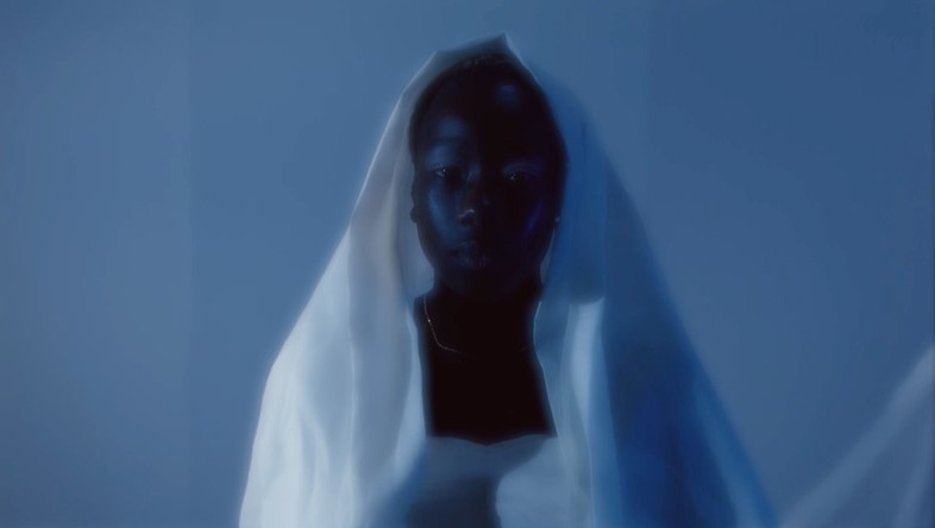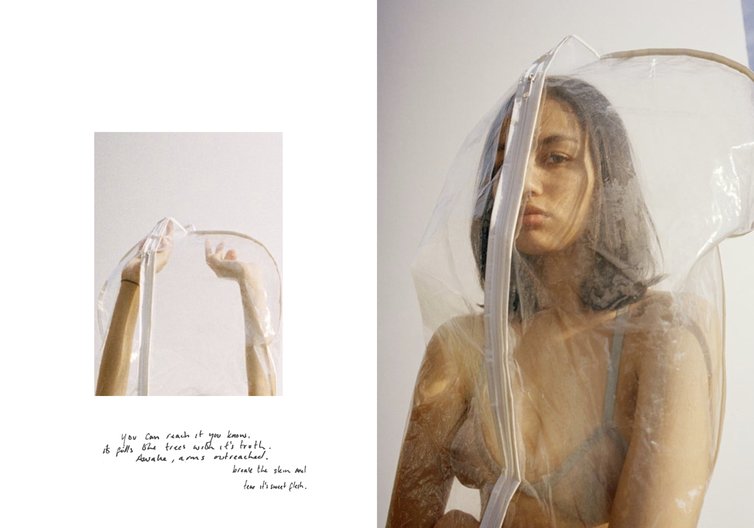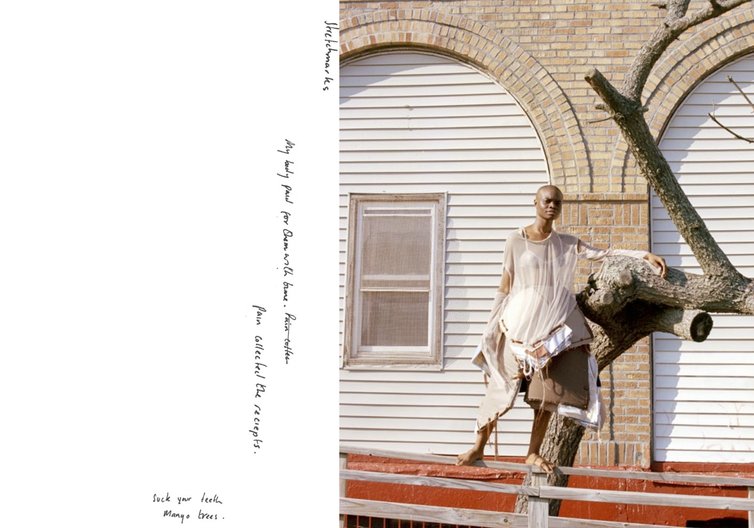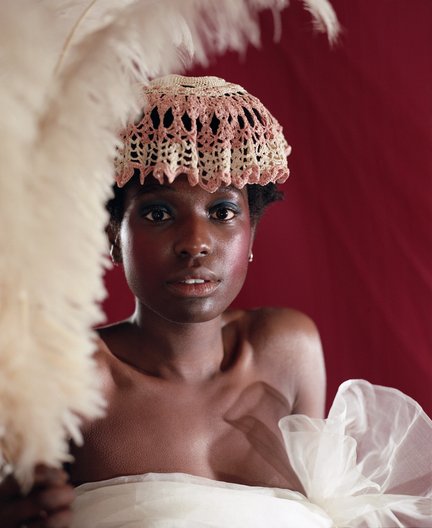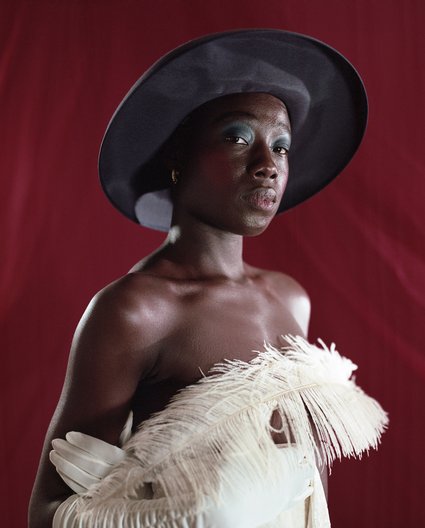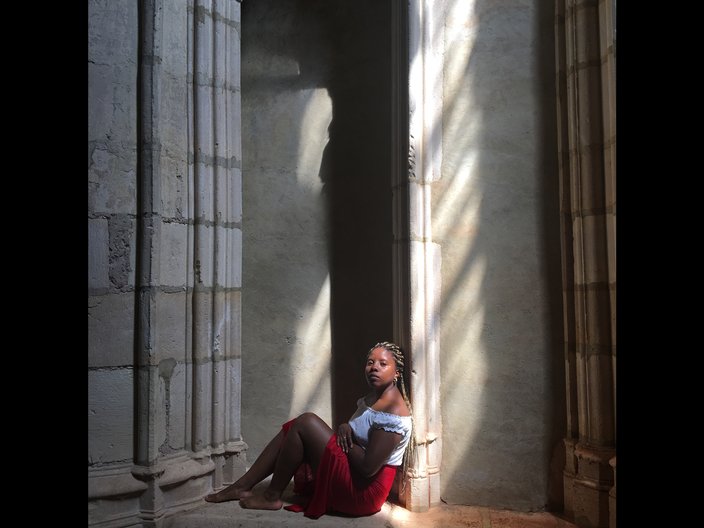17 September 2018
Design Connections 10x10 will return this year on Wednesday 19 September, showcasing a selection of the best emerging design talent in the UK, in collaboration with the Design Museum. We caught up with speaker Saint Lovie (Georgina Johnson) to find out more about her practice.
Tell us about yourself or your practice.
Well I’m a polymath. I graduated from a Womenswear degree (with 1st class
honors) in 2016 and have pretty much been dabbling in whatever I’ve been able to
get my hands on so far. Following my degree I went to NY for a bit to I guess, push
myself into the unknown, meet people and strike up relationships. I ended up
meeting and working with Photographer Tyler Mitchell on a short-film and photoseries that we then made into a zine, which we released last May (2017) to a brilliant response. That was my first time self-publishing and I’ve continued to do
so following that.
I was also offered my first artist’s commission last year by The Photographers Gallery and produced a multidisciplinary piece comprised of; an installation, film and photo-series – All of which lived in the gallery from October 17’ to February 18’.
I’m currently working towards completing my second for NOW Gallery due to launch in October this year. I also run an arts programme – The Laundry, which is by and for Women and BAME creative’s. More so prioritising creative’s from Black, South Asian and MENA backgrounds. The programme is young and we’ve had
some really great support so far, I’m pretty optimistic about it’s future. I would
say my main concerns or responsibilities right now are to; decentre the west in
arts and design culture, widen participation, broaden and contribute in the
creation of sustained visibility of the aforementioned groups, and have as much
fun as possible along the way!
What are you working on at the moment?
As mentioned I’m working on my second artist’s commission for NOW Gallery and
would be delighted to take on another film commission, just putting it out there.
I’m also putting out feelers, talking to brands and educators about a campaign I
plan on running, which will be spearheaded by a talk at the Ace & Tate store this
month, ‘Slow Fashion to Save Minds’. A campaign that is both concerned with
education reform and how we improve conversations and openness around
mental health particularly in the Fashion industry and challenging the systems
that attribute to poor mental health in folks within this industry. It also will be
looking at the link I strongly believe there is between positive mental health and
‘Slow Fashion’, in turn pinpointing how we can have a more sustainable industry
both socially and environmentally. In all facets of my practise I want to be
Counter-Cultural.
Why is design important?
I used to be pretty apprehensive and really critical of my work.- which I am still
unlearning. Which in part stemmed from I guess growing up very working class
and feeling as though you always have to do better, in the same tone it comes
from being a Black women, but it is also a lot of learnt behaviour. I remember
being in first year and seeing tutors scream at students and in foundation seeing
tutors rip peoples work to shreds. I was more than certain that I wouldn’t be
treated that way, which meant I was even harder on myself and my work to ensure
I avoided this, because there where these unhealthy methods in the place I was
supposed to be learning and nurtured in.
I made sure I showed my best, but in turn I ended up not knowing what my best
was, or what I liked. I was fighting within myself to resist this machine, but also
subconsciously learnt how to play the game. I didn’t truly learn the importance of
design until final year, where I had returned from taking a year out and moved
back to the UK. I returned with a different perspective. I actually had to force
myself to go back as I’d grown completely sick of the whole thing. Anyway moving
away just taught me that it really wasn’t that deep – as in University, this of
course varies from course to course. It might not be what you wanna hear, but it’s
true. It’s 5% of your life, if that. You should go and learn of course, but you can
learn in an array of environments, which is what I did when I took a break. It wasn’t
enough, what I’d learnt. I was killing myself, going to night Pattern-Cutting
classes, working and going to uni full time (which I’m sure is the story of many a
student), when I was in London pre-break and I still couldn’t see my work.
I learnt the importance of design when I took a break. It’s SO important to take
stock. It’s when you design something you can actually see, something that you
can learn and grow from that is important. Yes design should be both beautiful
and functional, and there are different ways of achieving this and different
approaches and measures to apply subjectively but the process is way more
important then the final product. Design is important when you are challenging
norms, making your own rules and breaking barriers. We will always need rebels,
in every facet of design.
What impact do you hope to see through your work?
I think I just want to be as honest as I can be from one moment to the next. I think
honesty rings true to most people and it isn’t confined to medium. I want to
change the landscape of the art and design industries, which may sound really
airy-fairy but I don’t have say, showing my work in some big museum as my
dream, it’s not. I can’t relate wholly to those standards and don’t want to look for
validation in age-old institutions. I want to build something of my own and both
change and challenge how we (my communities) interact with these industries.
Tell us about something you’ve seen that’s inspired you recently?
I went to see the Eduardo Chillida show at ‘Les Abattoirs’ in Toulouse a week ago, it
was incredibly inspiring. I really related to they way he saw things. He thought so
big!

